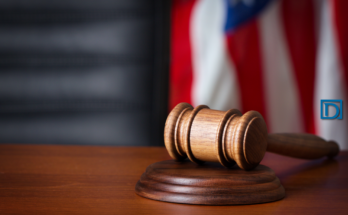A key reason that business owners and managers choose to form a corporation or limited liability company (LLC) is so that they won’t be held personally liable for debts should the business be unable to pay its creditors. However, sometimes courts will hold an LLC or corporation’s owners, members, and shareholders personally liable for business debts. When this happens it is called piercing the corporate veil.
Such was the case in Woodridge Hills Association v. Douglas Walter Williams, where defendant was held liable for a judgment against a bankrupt construction company of which he was the president. In 2006 plaintiff hired Redford Roofing and Construction Company (“Redford”) to replace all the roofs in its condominium development. The defendant, Williams, was the president, and sole officer of Redford. The project was completed, but plaintiff filed suit against Redford for breach of contract due to substandard work. The Circuit Court entered a judgment against Redford in the amount of $182,975. All of plaintiff’s attempts to collect on the judgment were unsuccessful and on October 29, 2009, Redford filed for bankruptcy. Soon there after, Williams created D.W. Williams, LLC (DWW).
On May 6, 2010, plaintiff filed an action against Williams and his newly formed corporation, DWW, looking to hold each of them liable for the full amount of the judgment against the now-bankrupt Redford.
Normally, a corporation is treated as an entity that is completely separate from its stockholders. However, this separation may be ignored where there is a unity of interest of the stockholders and the corporation and where the stockholders have used the corporate structure in an attempt to avoid legal obligations. With this in mind, the Court of Appeals found no issue of material fact as to whether Redford’s corporate veil should be pierced.
The court came to the conclusion that Redford was essentially used as an extension of Williams. He regularly used the corporation to pay his personal expenses, such as his home utilities and membership fees to several Detroit sports clubs. Additionally, Williams continually wrote checks to the corporation and then wrote checks to himself from the corporation whenever he desired – indicating that Williams treated his money and Redford’s money as one in the same. For these reasons, it was appropriate for the corporate veil to be pierced as between Williams and Redford.
However, the aforementioned reasons alone are not enough to justify holding William’s new corporation liable for the previous judgment. Nonetheless, the trial court determined DWW to be a mere continuation or reincarnation of Redford and, therefore, liable for plaintiff’s judgment against Redford. The court came upon this conclusion due to the fact Willaims’ role and conduct within both corporations closely mirrored one another. Williams ran both corporations from home, both used the same assets such as computers and work vehicles, and DWW began to invoice clients almost immediately after Redford filed bankruptcy while using many of the same contractors. Therefore, both Williams and DWW are held liable for the full amount of the judgment against Redford. Williams could have avoided the corporate veil being penetrated if he had been more diligent in separating his personal and business finances. When a shareholder’s assets are so intermingled with a corporation’s as to be nearly indistinguishable, the shareholder will likely be considered a continuation of the corporation.
This post was authored by law clerk Roger Leshinsky. Please contact Demorest Law Firm if you have any questions.



